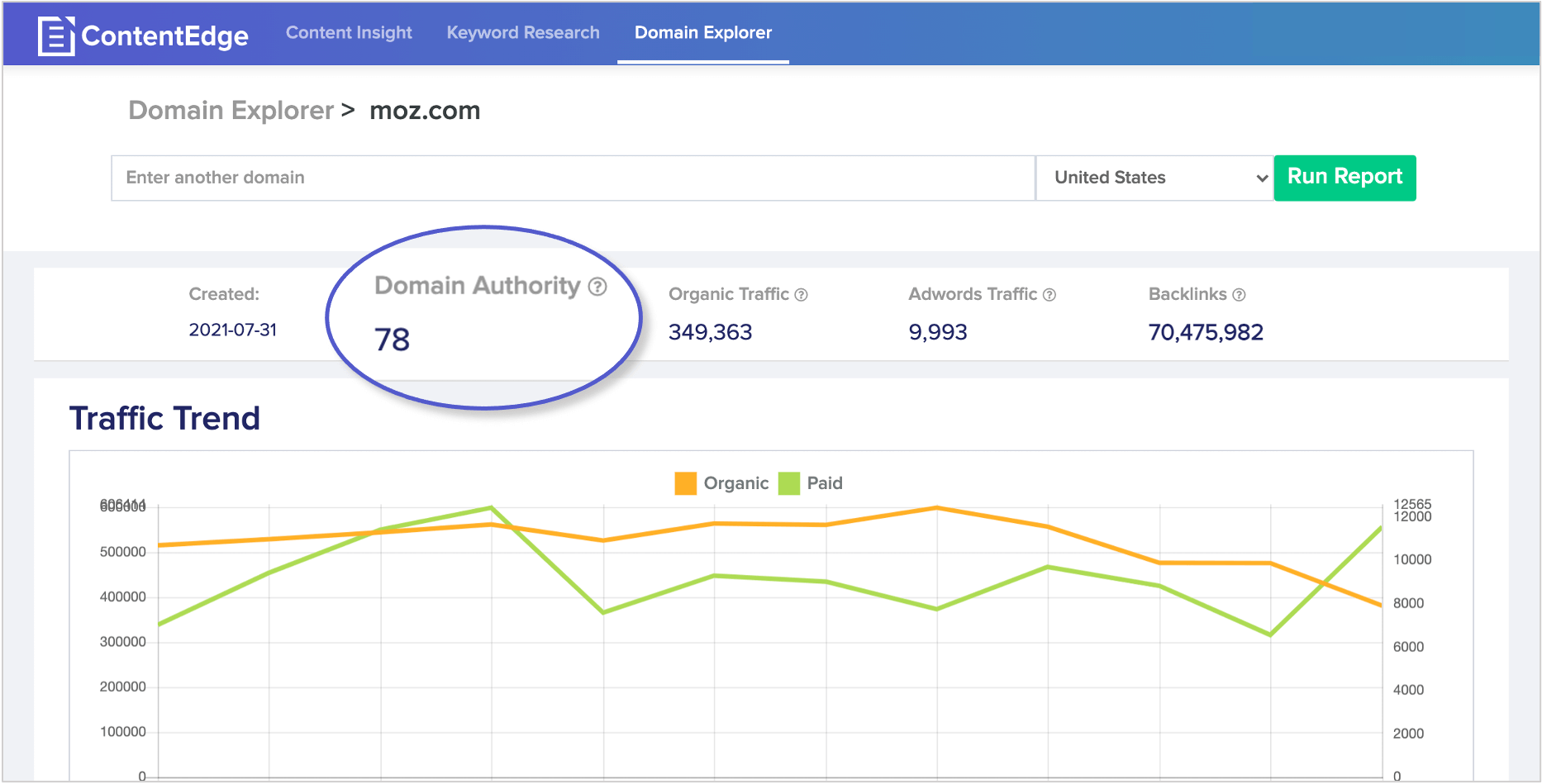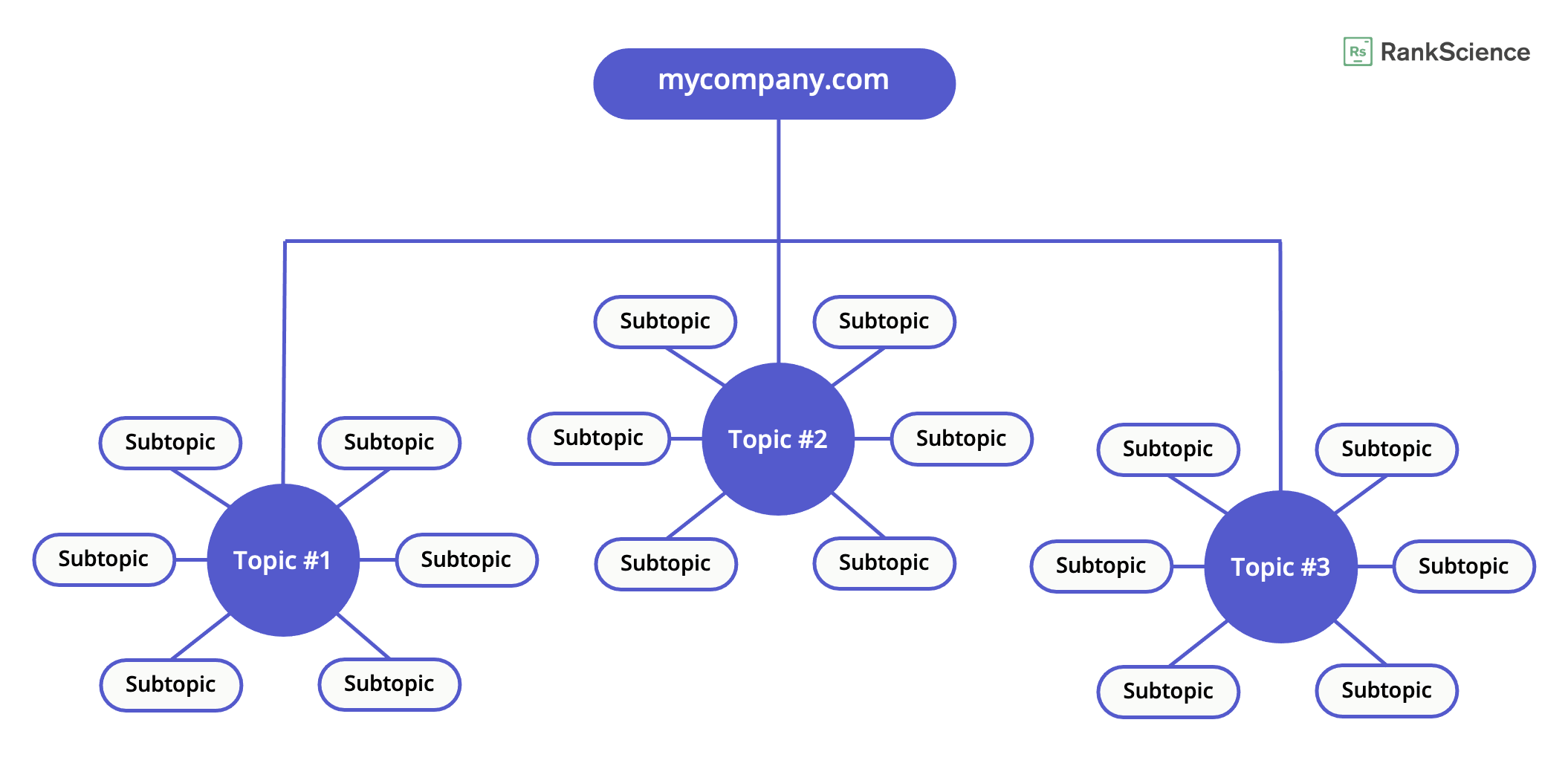Your DA score is like a grade on a test. It measures how well your site is meeting search engine expectations, and how your site stacks up against other players in the space.
Some marketers stress over it, but we’re here to tell you to relax. Take a deep breath. DA is not a definitive grade. It’s expected to fluctuate from time to time as your site is updated and retested regularly.
The score itself is doled out by content optimization software like ContentEdge, which looks at tons of performance signals to assign a score based on a 100-point scale. The scoring rubric for this is always changing, and domain authority does not have any direct impact on your rankings. In other words, you’ll only hurt yourself by obsessing over your DA score.

Learn more: What Domain Authority Is (and Isn’t)
That said, it’s still a helpful metric when viewed responsibly. Here are several steps you should take to improve your overall SEO strategy, which, in turn, will naturally increase your domain authority.
But first, what goes into a DA score?
DA is calculated using a number of different factors, which include:
- The number of unique backlinks to your site
- The number of backlinks from trusted sites (aka, link quality)
- The quality of your content
- Site structure and usability
- Social signals, like Facebook likes or LinkedIn shares on your links
“If I had to over-simplify Domain Authority, I would say that DA is an indicator of your aggregate link equity,” says Marketing Scientist Dr. Peter Meyers of Moz, the original inventor of DA.
The higher your DA score, the stronger your website is considered to be. However, as noted above, it shouldn’t be treated as an end goal in and of itself. Instead, consider it a byproduct of good SEO.
7 tips for increasing your domain authority
The path to raising your DA is no different from the path you’d take to optimize your site as a whole. Below are practical ways to keep your business marching forward towards SEO excellence.
Tip 1: Practice good on-page SEO
It goes without saying that you need to get the basics right. That means optimizing your site for fast load times, mobile friendliness, and other factors that lend to a good user experience.
A full SEO site audit can help to pinpoint the areas of your site that require the most attention. Remember to look at your site as a whole, not just on an individual post-by-post basis. If your site overall is hard to navigate or buggy, then people are less likely to recommend it to their friends and network for fear of it reflecting poorly on them.
Aside from this, you’ll want to establish a process for optimizing pages that are regularly updated, like blogs. At minimum, make sure that you’re targeting the right keywords, consolidating images, customizing metadata, and checking the content relevancy score for each article.
Moreover, don’t forget to maintain a good internal linking structure. This helps readers explore your content and Google to easily crawl your pages.
Tip 2: Find a niche to produce content for
Google tends to favor sites that consistently publish high-quality content about a particular subject. To that end, building up your expertise within a niche can pay dividends. It can keep your content focused, and save you from getting lost in the sauce as you juggle everything from keyword research to content creation all at once.
Find your niche by first considering your ideal customers. Who are they? What do they look like? What do they care about? What questions do they have regarding your line of expertise?
The answer to these questions can point you towards the core topics that you could write about. Once you have your main topics, you can then brainstorm subtopics and long-tail keywords to target.

Pro tip: Remember to keep your content strategy customer-centric, not keyword-centric. Occasionally, you’ll get an itch to post about a topic that seems pertinent to your customers, but doesn’t necessarily have the keyword data to back it up.
For example, say that you sell a social media marketing tool and see a new social channel gaining traction in your industry. You check SEMRush for monthly search volumes but can’t find search data on terms associated with that new channel. In this case, you may want to trust your gut and consider publishing content that your consumers may soon be looking for. Take the opportunity to establish yourself as an early adopter and a go-to expert of this new trend.
Tip 3: Partner with other experts
Brand partnerships are some of the most powerful vehicles for marketing. Through partner collaborations, you can earn white-hat backlinks and generate unique, expert-driven content..
The key here is to find partners who complement your product or service. Avoid brands that have competing services or products that are too similar to yours. Instead, find brands who share the same audience as you, but simultaneously fill a knowledge gap or provide complimentary services.
Partner programs can span many different areas, but some of the most popular collaborations include blog swaps, joint webinars (which could be repurposed as short video clips of spin-off blogs after the event), and newsletter spotlights.
Tip 4: Write for other high-authority sites
In addition to championing the importance of backlinks, Google has coined the acronym E-A-T—short for expertise, authoritativeness, and trustworthiness. These are three factors that Google uses to assess the quality of a site and its creators.
Through guest blogging, you can give yourself the opportunity to grow your backlinks and demonstrate your site’s trustworthiness at the same time. This, however, can only happen if you choose the right sites to write for.
Aaron Orendorff’s guide for evaluating publishers offers great tips for identifying the right partners. His 10-step template for a pitch-perfect guest post can help to determine whether a site’s publishing standards, top-trending headlines, and voice are aligned with your company’s. In addition to these data points, check each publisher’s DA score to get a pulse on their authoritativeness.
Keep in mind that some sites—especially media publishers—will not allow you to include do-follow links within your guest post. Regardless, any mention of your brand could help to bring visitors to your site and elevate the visibility of your business.
Tip 5: Nurture superstars on your team
Also related to E-A-T: Google likes to see that your authors are proven experts in your space. If your authors are well-known and have strong credentials within your industry, then Google is more likely to trust the content that they publish on your site.
Likewise, involving your team in content creation is a great way to foster knowledge-sharing across various departments. This can yield higher-quality content, while helping to scale distribution as your employees share your work with their personal networks.
Take some time to think of ways to boost author reputation. Encourage certain team members to regularly post on your site as well as other high-authority sites to start building up their credibility. To get the most out of your efforts, include author bios wherever you post online so that Google—and readers—have an easier time recognizing your authors as subject matter experts.
Tip 6: Repurpose content for various channels and mediums
One blog can go a long way. Using the same information, you can create an eBook, video, email, or deck (as examples) that engages different audiences. The idea here is that when you find a medium that resonates with your audience, all ships rise; the more your content gets shared, the more visibility you’ll earn around your brand.
Greater brand visibility should then translate to more site traffic, and naturally influence more people to refer to your content.
This practice of repurposing content also makes it far easier for your team to scale its marketing efforts. The trick is to identify the best evergreen content on your site to recycle. This ensures that you have plenty of time to test new formats before the information becomes outdated. You can use Google Analytics, YouTube Analytics, and/or social media data to identify your most popular posts to repurpose.
Tip 7: Create shareable content
Last but not least, it never hurts to go the extra mile in adding graphics, videos, and other elements that make your page more appealing. Some marketers become so preoccupied with promoting their content that they forget to focus on what users actually want to see.
Ask yourself:
- When you land on a blog, where do your eyes go?
- Are you likely to read a blog if it’s just one monotonous wall of text?
- What types of links, multimedia, and other visual cues tell you that a blog is worth your time?
The way information is presented can make all the difference in whether someone sticks around or writes you off. That’s why you’ll want to use formatting and media—or even tone—to inspire shares on your content rather than begging for them.
The bottom line
The websites with the highest DA scores aren’t necessarily doing anything new or shockingly different from everyone else. They are simply exercising good SEO. Heed the tips above to boost your DA score and to, most importantly, provide the best possible user experience for your visitors.
